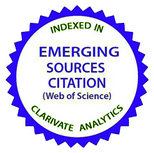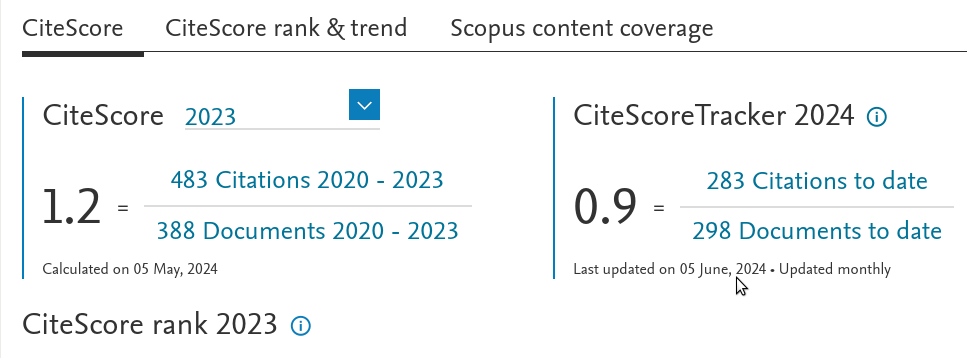Послідовна теорія альфа-розпаду
DOI:
https://doi.org/10.15407/ujpe66.5.379Ключові слова:
теорiя розпаду, a-розпад, тунелювання, теорiя розсiюванняАнотація
В рамках теорiї розпадiв Гольдбергера i Ватсона a-розпад розглядається як перехiд мiж початковим зв’язаним станом ядра та станами неперервного спектра з a-частинкою. В квазикласичному наближеннi виведенi базиснi хвильовi функцiї для a-розпаду з довiльним орбiтальним кутовим моментом. Альфа-частинка описується квадратично-iнтегровним хвильовим пакетом, утвореним цими функцiями, амплiтуда якого ззовнi ядра експоненцiйно росте аж до хвильового фронту. Аналiзується ефект Мошинського пошкодження хвильового фронту. Виведений вираз для швидкостi розпаду апроксимується квазикласичною формулою.
Посилання
D.M. Brink, M.C. Nemes, D. Vautherin. Eff ect of intrinsic degrees of freedom on the quantum tunneling of a collective variable. Ann. Phys. 147, 171 (1983).
https://doi.org/10.1016/0003-4916(83)90070-2
R.G. Lovas, R.J. Liotta, A. Insoliac, K. Vargaa, D.S. Deliond. Microscopic theory of cluster radioactivity. Phys. Rep. 294, 265 (1998).
https://doi.org/10.1016/S0370-1573(97)00049-5
S.G. Kadmensky, S.D. Kurgalin, Yu.M. Chuvilskii. Cluster states in atomic nuclei and cluster-decay processes. Phys. J. Part. Nucl. 38, 1333 (2007).
https://doi.org/10.1134/S1063779607060019
A. Sandulescu, W. Greiner. Cluster decays. Rep. Prog. Phys. 55, 1423 (1992).
https://doi.org/10.1088/0034-4885/55/9/002
D.S. Delion. Theory of Particles and Clusters Emission (Springer, 2010) [ISBN 978-3-642-14406-6].
R.G. Thomas. A formulation of the theory of alpha-particle decay from time-independent equations. Prog. Theor. Phys. 12, 253 (1954)
https://doi.org/10.1143/PTP.12.253
H.F. Zhang, G. Royer. A particle preformation in heavy nuclei and penetration probability. Phys. Rev. C 77, 054318 (2008).
https://doi.org/10.1103/PhysRevC.77.054318
A. Zdeb, M. Warda, K. Pomorski. Half-lives for a and cluster radioactivity in a simple model. Phys. Scr. T 154, 014029 (2013).
https://doi.org/10.1088/0031-8949/2013/T154/014029
A. Zdeb, M. Warda, K. Pomorski. Half-lives for a and cluster radioactivity within a Gamow-like model. Phys. Rev. C 87, 024308 (2013).
https://doi.org/10.1103/PhysRevC.87.024308
I. Silisteanu, W. Scheid, A. Sandulescu. Proton, alpha and cluster decay rates for nuclei with 52 ≤ Z ≤ 56 and 52 ≤ N ≤ 60. Nucl. Phys. A 679, 317 (2001).
https://doi.org/10.1016/S0375-9474(00)00336-5
Daming Deng, Zhongzhou Ren. Improved double-folding a-nucleus potential by including nuclear medium eff ects. Phys. Rev. C 96, 064306 (2017).
https://doi.org/10.1103/PhysRevC.96.064306
V.Yu. Denisov, A.A. Khudenko. a decays to ground and excited states of heavy deformed nuclei. Phys. Rev. C 80, 034603 (2009).
https://doi.org/10.1103/PhysRevC.80.034603
V.Yu. Denisov, A.A. Khudenko. Erratum: a decays to ground and excited states of heavy deformed nuclei. Phys.
Rev. C 80, 034603 (2009); Phys. Rev. C 82, 059902(E) (2010).
M. Ismail, A.Y. Ellithi, M.M. Botros, A. Abdurrahman. Penetration factor in deformed potentials: Application to
a decay with deformed nuclei. Phys. Rev. C 86, 044317 (2012).
Chang Xu, Zhongzhou Ren. Favored a-decays of medium mass nuclei in density-dependent cluster model. Nucl. Phys. A 760, 303 (2005).
https://doi.org/10.1016/j.nuclphysa.2005.06.011
Chang Xu, Zhongzhou Ren. New deformed model of a-decay half-lives with a microscopic potential. Phys. Rev. C 73, 041301(R) (2006).
https://doi.org/10.1103/PhysRevC.73.041301
D.F. Jackson, M. Rhoades-Brown. Theories of alpha-decay. Ann. Phys. 105, 151 (1977).
https://doi.org/10.1016/0003-4916(77)90231-7
T. Berggren, P. Olandes. Alpha decay from deformed nuclei:(I). Formalism and application to ground-state decays. Nucl. Phys. A 473, 189 (1987).
https://doi.org/10.1016/0375-9474(87)90142-4
T. Berggren, P. Olandes. Alpha decay from deformed nuclei: (II). Application to the decay of high-spin states. Nucl. Phys. A 473, 221 (1987).
https://doi.org/10.1016/0375-9474(87)90143-6
T. Berggren. Anisotropic alpha decay from oriented oddmass isotopes of some light actinides. Phys. Rev. C 50,
https://doi.org/10.1103/PhysRevC.50.2494
(1994).
Xiao-Dong Sun, Ping Guo, Xiao-Hua Li. Systematic study of a decay half-lives for even-even nuclei within a two-potential approach. Phys. Rev. C 93, 034316 (2016).
https://doi.org/10.1103/PhysRevC.93.034316
Xiao-Dong Sun, Chao Duan, Jun-Gang Deng, Ping Guo, Xiao-Hua Li. Systematic study of a decay for odd-A nuclei within a two-potential approach. Phys. Rev. C 95, 014319 (2017).
https://doi.org/10.1103/PhysRevC.95.014319
B. Sahu, S. Bhoi. Potential for a-induced nuclear scattering, reaction and decay, and a resonance-pole-decay model with exact explicit analytical solutions. Phys. Rev. C 96, 044602 (2017).
https://doi.org/10.1103/PhysRevC.96.044602
R.M. Clark, H.L. Crawford, A.O. Macchiavelli, D. Rudolph, A. Sеmark-Roth, C.M. Campbell, M. Cromaz, P. Fallon, C. Morse, C. Santamaria. a decay of high-spin isomers in N = 84 isotones. Phys. Rev. C 99, 024325 (2019).
https://doi.org/10.1103/PhysRevC.99.024325
G. Gamow. Zur Quantentheorie des Atomkernes. Z. Phys. 51, 204 (1928).
https://doi.org/10.1007/BF01343196
R.W. Gurney, E.U. Condon. Quantum mechanics and radioactive disintegration. Phys. Rev. 33, 127 (1929).
https://doi.org/10.1103/PhysRev.33.127
A.G. Sitenko. Lectures in Scattering Theory. Edited by P.J. Shepherd (Elsevier, 1971) [ISBN: 9781483486825].
https://doi.org/10.1016/B978-0-08-016574-5.50007-8
F.F. Karpeshin, G. LaRana, E. Vardaci, A. Brondi, R. Moro, S.N. Abramovich, V.I. Serov. Resonances in alpha-
nuclei interaction. J. Phys. G: Nucl. Part. Phys. 34, 587 (2007).
https://doi.org/10.1088/0954-3899/34/3/016
S.A. Gurvitz, G. Kalbermann. Decay width and the shift of a quasistationary state. Phys. Rev. Lett. 59, 262 (1987).
https://doi.org/10.1103/PhysRevLett.59.262
S.A. Gurvitz. Novel approach to tunneling problems. Phys. Rev. A 38, 1747 (1988).
https://doi.org/10.1103/PhysRevA.38.1747
S.A. Gurvitz, P.B. Semmes, W. Nazarewicz, T. Vertse. Modifi ed two-potential approach to tunneling problems. Phys. Rev. A 69, 042705 (2004).
https://doi.org/10.1103/PhysRevA.69.042705
M.L. Goldberger, K.M. Watson. Collision Theory, (J. Wiley, 1964) [ISBN: 978-0486435077].
https://doi.org/10.1063/1.3051231
A.Ya. Dzyublik. Integrable wave function, describing space-time evolution of alpha-decay. arXiv: 2001.09505v1[nucl-th]26Jan2020.
A.Ya. Dzyublik. Alpha decay of deformed even-even nuclei. Acta Phys. Polonica 10, 69 (2017).
https://doi.org/10.5506/APhysPolBSupp.10.69
M. Freer, M. Freer, H. Horiuchi, Y. Kanada-En'yo, D. Lee, Ulf-G. Meibner. Microscopic clustering in light nuclei. Rev. Mod. Phys. 90, 035004 (2018).
https://doi.org/10.1103/RevModPhys.90.035004
N.T. Zinner. Alpha decay rate enhancement in metals: An unlikely scenario. Nucl. Phys. A 781, 81 (2007).
https://doi.org/10.1016/j.nuclphysa.2006.10.071
A.Ya. Dzyublik. Infl uence of electronic environment on a decay. Phys. Rev. C 90, 054619 (2014).
https://doi.org/10.1103/PhysRevC.90.054619
R.G. Newton. Scattering Theory of Waves and Particles (Springer, 1982) [ISBN: 978-3-642-88128-2].
https://doi.org/10.1007/978-3-642-88128-2
A.S. Davydov. Quantum Mechanics. Edited by D. ter Haar (Elsevier, 1965) [ISBN: 9781483187839].
G. Esposito. A phase-integral perspective on a-decay. Eur. Phys. J. Plus 135, 692 (2020).
https://doi.org/10.1140/epjp/s13360-020-00719-8
R.E. Langer. On the connection formulas and the solutions of the wave equation. Phys. Rev. 51, 669 (1937).
https://doi.org/10.1103/PhysRev.51.669
M. Moshinsky. Boundary conditions and time-dependent states. Phys. Rev. 84, 525 (1951).
https://doi.org/10.1103/PhysRev.84.525
M. Moshinsky. Diff raction in time. Phys. Rev. Lett. 88, 625 (1952).
https://doi.org/10.1103/PhysRev.88.625
R.G. Winter. Evolution of a quasi-stationary state. Phys. Rev. 123, 1503 (1961).
https://doi.org/10.1103/PhysRev.123.1503
G. Garcia-Calder'on, A. Rubio. Transient effects and delay time in the dynamics of resonant tunneling. Phys. Rev. A 55, 3361 (1997).
https://doi.org/10.1103/PhysRevA.55.3361
W. van Dijk, Y. Nogami. Novel expression for the wave function of a decaying quantum system. Phys. Rev. Lett. 83, 2867 (1999). https://doi.org/10.1103/PhysRevLett.83.2867
W. van Dijk, F. Kataoka, Y. Nogami. Space-time evolution of a decaying quantum state. J. Phys. A 32, 6347 (1999). https://doi.org/10.1088/0305-4470/32/35/311
W. van Dijk. Numerical time-dependent solutions of the Schr¨odinger equation with piecewise continuous potentials. Phys. Rev. E 93, 063307 (2016). https://doi.org/10.1103/PhysRevE.93.063307
Handbook of Mathematical Functions. Edited by M. Abramovitz, I.A. Stegun (Nat. Bureau of Standards, 1972).
I.S. Gradshteyn, I.M. Ryzhik. Table of Integrals, Series, and Products. Edited by D. Zwillinger (Academic Press, 2007) [ISBN: 978-0-12-373637-6].
Downloads
Опубліковано
Як цитувати
Номер
Розділ
Ліцензія
Ліцензійний Договір
на використання Твору
м. Київ, Україна
Відповідальний автор та співавтори (надалі іменовані як Автор(и)) статті, яку він (вони) подають до Українського фізичного журналу, (надалі іменована як Твір) з одного боку та Інститут теоретичної фізики імені М.М. Боголюбова НАН України в особі директора (надалі – Видавець) з іншого боку уклали даний Договір про таке:
1. Предмет договору.
Автор(и) надає(ють) Видавцю безоплатно невиключні права на використання Твору (наукового, технічного або іншого характеру) на умовах, визначених цим Договором.
2. Способи використання Твору.
2.1. Автор(и) надає(ють) Видавцю право на використання Твору таким чином:
2.1.1. Використовувати Твір шляхом його видання в Українському фізичному журналі (далі – Видання) мовою оригіналу та в перекладі на англійську (погоджений Автором(ами) і Видавцем примірник Твору, прийнятого до друку, є невід’ємною частиною Ліцензійного договору).
2.1.2. Переробляти, адаптувати або іншим чином змінювати Твір за погодженням з Автором(ами).
2.1.3. Перекладати Твір у випадку, коли Твір викладений іншою мовою, ніж мова, якою передбачена публікація у Виданні.
2.2. Якщо Автор(и) виявить(лять) бажання використовувати Твір в інший спосіб, як то публікувати перекладену версію Твору (окрім випадку, зазначеного в п. 2.1.3 цього Договору); розміщувати повністю або частково в мережі Інтернет; публікувати Твір в інших, у тому числі іноземних, виданнях; включати Твір як складову частину інших збірників, антологій, енциклопедій тощо, то Автор(и) мають отримати на це письмовий дозвіл від Видавця.
3. Територія використання.
Автор(и) надає(ють) Видавцю право на використання Твору способами, зазначеними у п.п. 2.1.1–2.1.3 цього Договору, на території України, а також право на розповсюдження Твору як невід’ємної складової частини Видання на території України та інших країн шляхом передплати, продажу та безоплатної передачі третій стороні.
4. Строк, на який надаються права.
4.1. Договір є чинним з дати підписання та діє протягом усього часу функціонування Видання.
5. Застереження.
5.1. Автор(и) заявляє(ють), що:
– він/вона є автором (співавтором) Твору;
– авторські права на даний Твір не передані іншій стороні;
– даний Твір не був раніше опублікований і не буде опублікований у будь-якому іншому виданні до публікації його Видавцем (див. також п. 2.2);
– Автор(и) не порушив(ли) права інтелектуальної власності інших осіб. Якщо у Творі наведені матеріали інших осіб за виключенням випадків цитування в обсязі, виправданому науковим, інформаційним або критичним характером Твору, використання таких матеріалів здійснене Автором(ами) з дотриманням норм міжнародного законодавства і законодавства України.
6. Реквізити і підписи сторін.
Видавець: Інститут теоретичної фізики імені М.М. Боголюбова НАН України.
Адреса: м. Київ, вул. Метрологічна 14-б.
Автор: Електронний підпис від імені та за погодження всіх співавторів.

















